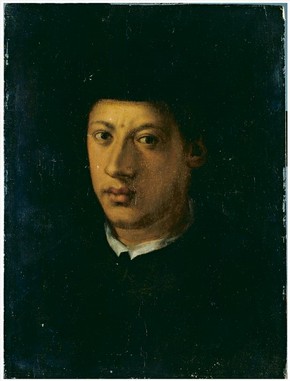Call for Proposals: Colors of Blood, Semantics of Race: Racial Categories and Social Representations: A Global Perspective (From the late Middle Ages to the 21st Century)
Casa de Velázquez
Madrid, Spain
2016-12-15 through 2016-12-16
Toward the end of the Middle Ages, the outset of the European expansion considerably increased the contacts between culturally different peoples. Beginning in southern Europe, this process rapidly reached more distant regions of the globe which were increasingly falling under the Western sphere of influence. This phenomenon transformed the communities affected by that expansion, and even led to the formation of new ‘fractal’ societies. These were not only multi-ethnic communities in which “Old Christians” lived together with “New Christians” (as in the Iberian Peninsula), or European colonizers associating with indigenous colonized peoples (beyond the boundaries of the Old Continent), or elites of European descent with subaltern masses, but frequently also extremely miscegenated societies.
During the early modernity, the socio-racial relations were very much influenced by the medieval notion of “blood”, according to which the “quality” of individuals was strongly associated with their “honor”. Those relations were, in addition, influenced by a perception of “otherness” marked by religious intolerance, as well as by a racial perspective associated with the ethnic profile and the place of origin, or “nation”, of the individuals. These criteria rapidly adapted to the new realities, aiming to establish a hierarchic order following the ancient regimen’s model of society; a complex task considering the elevated levels of ethnic diversity, of illegitimate children, and of cultural and biological miscegenation.
The combination of all these elements, adapted to the particular socio-ethnic background of the local populations concerned and placed in relation to the local forms of production, generated a whole myriad of socio-racial categories, most of which were unprecedented. Severely regulated by the legislation of the time, and internalized from an identitary point of view by social actors, these categories gave specificity, both unique and common, to the societies that made use of them. Those categories mainly defined the racialized status of individuals, often adding linguistic complements in order to provide more specific definitions. Their sources of inspiration were very diverse: the color or the tonalities of the skin, the type or degree of biological miscegenation, the level of transculturation, the stereotyped appearance of other peoples, the features of certain animals, and words borrowed from non-Latin languages.
As the social transformations consolidated, other complements and semantic variations begin to appear. Following a simultaneous process of classification and creolisation, those linguistic aggregates mainly aimed to further underline the differences of status among individuals belonging to the same sectors and, at times, to give meaning to the “oddest” mixtures. There were also efforts to define the individuals who lived in the borderlands, as well as to categorize the workforce according to the “new” forms of servitude, the introduction of the ‘plantation complex’, the modernization of the slave and indentured systems, and the development of the transnational slave trade.
Since the 18th Century, and especially over the course of the 19th and much of the 20th, the democratic revolutions, the abolitions of slavery, the process of decolonization, the impact of scientific racism, the consolidation of skin color as a racial catalyser, the massive migrations, the expansion of U.S. popular culture, and the racialization of poverty and of criminality, among other phenomena, had an enormous impact on the systems of representation and, consequently, on the semantics of socio-racial categorization. Nowadays, in spite of the collapse of apartheids, of the seeming consecration of democracy as the dominant model of government worldwide, and of the fortunate downfall of the scientific paradigm of race, certain categories (mainly pejorative) have continued to be evoked in the former colonial and metropolitan territories, and even beyond, in other parts of the world. This amazing longevity seems to put in evidence the continuity over time of the socio-racial representations that began to take form more than five-hundred years ago, when Europe began expanding its perceptions of “otherness” throughout the world.
Taking as a starting point the Mediterranean and the Atlantic World in the late Middle Ages, and continuing with the colonial regions of the wider world during the modern age, and those territories in which socio-racial categories continue to be used in the contemporary period, the present colloquium aims to shed new light on the construction of these categories by studying them from a ‘longue durée’ perspective. Accordingly, we propose to focus on the perceptions developed by social actors within the different ‘spaces of experience’ in order to explain, on the one hand, the semantics that gave form to the categories that constitute our object of study and, on the other hand, the different sociocultural, socioeconomic and socio-cognitive dynamics that over time have contributed to the emergence, perpetuation and even to the disappearance of the representations that those same categories reflected. We will also be interested in studying the links of these variables with the different racialized notions of ‘self-identification’, as well as the appropriations, transmissions and semantic redefinitions between societies structured differently and/or culturally different. Attention will also be paid to ‘from below’ analytical approaches, in particular if they cover the perceptions of autochthonous and other marginalized populations, as well as those of the subaltern sectors, including slaves, in terms of identitary appropriation, of linguistic resistance and of their own categories/representations.
These lines of reflection are not exhaustive, as we will also consider proposals regarding other geo-historical contexts, or offering theoretical formulations that could enrich discussions from a trans-disciplinary perspective.
Those interested in attending should send their proposals in .doc or .pdf format to the following email address: couleursdesang@gmail.com. Proposals should include name, contact details, institutional affiliation, a short CV, title, and an abstract not exceeding one page in length (about 350 words). The deadline for consideration is September 10th, 2016. Successful proposals will be announced in mid-September. There will be no inscription fees and the organizing committee will cover travel costs and accommodation for invited participants. Presentations of papers should not exceed 30 minutes. The languages of the workshop are English, French, Spanish, and Portuguese. A selection of papers presented at the workshop will be published in a peer-reviewed edited volume.
For more information, click here.





